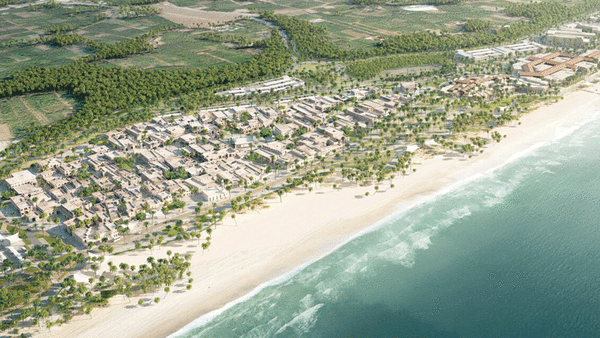

MUSCAT, APRIL 4
A consortium of international consultants has announced the launch of work on a detailed masterplan and design of the Salalah Smart City project on behalf of the Omani Ministry of Housing and Urban Planning.
Leading the consortium is leading multi-disciplinary engineering consultancy firm F&M Middle East, which has tied up with international architecture and design firm Sasaki (for the master-planning components), mobility planning and infrastructure design firm MIC-HUB (for mobility aspects), and UK-based multidisciplinary engineering firm Cundall (for infrastructure and environmental elements).
Last month, consortium leader F&M Middle East Engineering Consultancy said it was among a number of companies that had signed contracts with the Ministry for the development of as many as seven Smart Cities in the Sultanate of Oman.
The Smart City initiative, it noted, was part of Oman’s Urban Spatial Strategy Plan conceived in line Vision 2040.
The Smart City project will significantly enhance Salalah’s important as a rapidly expanding hub for tourism, industry, investment and international maritime trade.
Home to an international airport, as well as one of the region’s biggest cargo transshipment and logistics hubs, Salalah is ideally placed for long-term development as sustainable city.
“Salalah has a host of incredible natural features, cultural and historic assets – to compliment all of these, our goal is to create the most vibrant, human-scaled, innovative, diverse, smart and sustainable destination in the region. Salalah Smart City will present a bold vision for the prosperous and sustainable future of the area,” said consortium member MIC-HUB in a statement.
“Our approach will be rooted in the broader ecological context of Salalah and forward-thinking strategies of sustainability, livability, and smart systems will be integrated throughout. We envision the city of the future, with a pedestrian oriented design that seeks to reinforce a new paradigm shift towards greater community and environmental stewardship.”
According to MIC-Hub, a mobility framework for the Smart City will seek to reduce car use by providing safe spaces for residents and visitors. The goal is to promote shared mobility, micro-mobilities, and on-demand and demand-responsive transport modes.
Also envisaged are an integrated public transport network, driverless vehicles to reduce road congestion and digital platforms for integrated mobility systems.
Significantly, the start of work on the Salalah Smart City project follows the successful progression of the Greater Muscat Structure Plan – also initiated by the Ministry of Housing and Urban Planning.
Due to be completed this year, the aim of the project is to provide a more focused spatial development strategy for the 1360 km2 metropolitan region.
Among other features, the new plan will ensure that Greater Muscat benefits from an efficient and resilient city-wide utility infrastructure network, with an emphasis on renewable technology and water lifecycle. It will incorporate a sustainable and smart city framework and shore up defences against flood risks.
Last year, the Ministry of Housing and Urban Planning kicked off an ambitious initiative to support the development of ‘Smart Cities’ in a number of locations, notably, Suhar, Nizwa and Salalah.
The initiative stems from a landmark Oman National Spatial Strategy (ONSS) first unveiled by the Ministry in March 2021.
Billed as “the essential enabler for the implementation of Oman 2040 Vision”, the Spatial Strategy sets out a broad framework for urban growth in the country over the next 20 years.
It also seeks to ensure that key national cities remain competitive and their growth aligned with the UN Goals for Sustainable Development 2030.
Oman Observer is now on the WhatsApp channel. Click here



